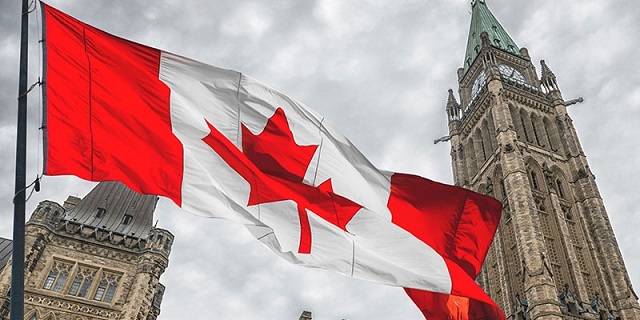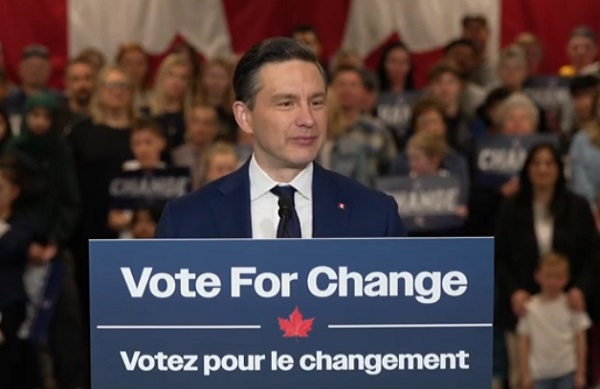Economy
Housing policy should focus on closing the demand-supply gap, not inducing demand or stifling supply

From the Fraser Institute
FEDERAL REFORMS TO IMPROVE HOUSING AFFORDABILITY
BY JOSEF FILIPOWICZ AND STEVE LAFLEUR
Canada’s declining housing affordability reflects a large, worsening imbalance between housing demand and housing supply.
Few policy areas are gaining as much attention in Canada as housing. This is unsurprising, given that Canada has the largest gap between homes prices and incomes among G7 nations (OECD, 2023) and rents continue to rise in most cities (Statistics Canada, 2023a). As eroding housing affordability has expanded to more parts of Canada, demands for policy solutions have grown beyond local jurisdictions, pressuring federal decisionmakers to act.
First, this essay offers a diagnosis of the issue—a large, growing imbalance between housing demand and supply. Second, it discusses federal policies affecting housing demand, urging better coordination and restraint amid tight supply conditions. Third, it discusses the federal government’s less-direct—though still important—options to improve housing supply.
Guiding principles: do no more harm, and close the demand-supply gap
Canada’s declining housing affordability reflects a large, worsening imbalance between housing demand and housing supply. This is evident when comparing trends in population growth and housing completions. Figure 1 charts these two metrics between 1972 and 2022. In recent years, Canada’s population growth has accelerated, while the number of homes completed has declined relative to the 1970s. 1

Policy efforts should focus on closing the demand-supply gap. The federal government should first ensure that it is not exacerbating the problem, either by stoking demand or by stifling supply, and second by both reviewing all existing policies through a supply-demand lens while implementing tailored policies aimed at closing the demand-supply gap.
Demand-side considerations for federal housing policy
Though all levels of government influence both housing demand and supply, the federal government’s policy levers pertain more directly to demand. They do so in two important ways.
First, federal policy influences population growth. As Canada’s birth rate has declined, population growth has been driven primarily by immigration (including both permanent and temporary residents) (Statistics Canada, 2023c). Though provinces may influence immigration decisions, the federal government establishes annual targets (where applicable) and admission criteria (Filipowicz and Lafleur, 2023).
Second, the federal government influences households’ ability to pay for housing. Policies for home buyers including the First-Time Home Buyers’ Tax Credit and the First Home Savings Account, which, combined with the Home Buyers’ Plan, enable the accumulation of tax-free savings for a down payment. 2 Federal policies for homeowners include the exemption from capital gains taxation on the sale of primary residences, loan insurance through the Canada Mortgage and Housing Corporation, and residential mortgage underwriting through the Office of the Superintendent of Financial Institutions. Combined, these policies influence the relative attractiveness of housing as an investment.
Without adequate supply, these policies result in higher prices, rather than greater affordability. The federal government should review all existing or proposed policies directly or indirectly impacting housing demand. Further, it should adopt the following two policy approaches:
• Stronger consideration of housing supply dynamics when determining short, medium and long-term immigration targets or visa issuance. For example, supply metrics (e.g. housing starts, completions, and rental vacancy rates) should help inform multi-year plans or criteria for permanent and non-permanent resident admissions.
• Refraining from introducing new demand-inducing subsidies, such as tax credits or subsidies to homebuyers and homeowners, while comprehensively reviewing the impact of existing subsidies.
Supply-side considerations for federal housing policy
Housing supply in Canada is influenced primarily by provincial and local governments. Decisions concerning land-use and growth planning—including for lands owned by the federal government—largely rest with these levels of government, meaning housing construction projects cannot be realized without first aligning with, and receiving approval from, local authorities. Federal policies aiming to grow the housing supply must account for this.
Federal influence on housing supply can be divided into four policy types. First are fiscal transfers. Every year the federal government transfers billions of dollars to municipalities to fund infrastructure. In some cases, funding is permanent and based on federal-provincial agreements.3 In other cases, funding is negotiated for specific projects.4
Second, the federal government also funds the development of non-market housing. Programs such as the National Co-Investment Fund and Rapid Housing Initiative offer low-interest or forgivable loans, and direct funding, respectively, to organizations building or acquiring non-market housing.
Third, federal tax policies and programs influence the financial feasibility of homebuilding. For example, federal sales and capital gains taxes apply differently to different housing types, such as condominiums, rental buildings and accessory dwelling units (e.g. basement or laneway suites).5
Further, federal programs such as the Rental Construction Financing Initiative and multi-unit mortgage loan insurance products influence project feasibility by providing rental builders with low-interest loans or reduced premiums.
Fourth, the federal government’s primary responsibility for immigration gives it significant influence over the mix of skills prioritized in application screening, affecting the construction sector’s ability to recruit workers. Indeed, the share of immigrants working in the construction sector was lower than that among Canada’s overall population in 2020 (BuildForce Canada, 2020), reflecting the longstanding selection preferences of federal immigration policy until more recent changes.6
The federal government should coordinate with local and provincial governments as it develops policies, avoiding the creation of additional barriers and duplication. Specifically, the following three approaches should inform federal efforts to improve housing supply:
• Tying all federal infrastructure funding to housing supply metrics such as housing stock growth, starts or completions, ensuring limited funds are directed to those regions facing the strongest growth pressures in a transparent fashion, while reducing administrative costs and jurisdictional overlap.
• Reviewing and reforming the tax treatment of all housing development, helping improve the feasibility of large- and small-scale projects Canada-wide.
• Further prioritizing skills related to homebuilding in immigration policies and eligibility criteria.
Conclusion
Faced with a widening gap between housing demand and supply, this essay focuses on the federal government’s influence on housing markets, offering five areas of policy action.
The most direct federal levers pertain to housing demand. Housing constraints should be weighed more heavily when setting immigration policy, including temporary immigration, and new demand-inducing policies such as homebuyer tax credits should be avoided, while existing policies should be reviewed.
Given the federal government’s less direct influence on housing supply, intergovernmental coordination is recommended. Limited transfer funding should follow local housing supply metrics, while the tax treatment of housing development could also be reformed, enabling a larger number of projects to be financially feasible. Lastly, immigration policies should emphasize skills required to build more housing.
Authors:
1 For more on the gap between population growth and housing completions, see Filipowicz (2023).
2 For a full list of incentives and rebates for homebuyers, see <https://www.cmhc-schl.gc.ca/consumers/home-buying/government-of-canada-programs-to-support-homebuyers>, as of February 5, 2023.
3 For example, the Canada Community-Building Fund (formerly the Gas Tax Fund) delivers approximately $2 billion annually to local governments.
It is governed by a series of federal-provincial agreements.
4 For example, the federal government has committed one-third of the capital funding required by the Surrey Langley SkyTrain. Similar agreements
are common for major transit infrastructure.
5 The federal government recently announced the removal of the goods and services tax on purpose-built rental housing, helping the feasibility
of this housing class. For more on the influence of federal taxation on rental housing, see Canadian Home Builders’ Association (2016).
6 Immigration, Refugees and Citizenship Canada changed screening processes in mid-2023, favouring trade occupations, among others. The full effects of these changes will become apparent with time.
Canadian Home Builders’ Association (2016). Encouraging Construction and Retention of Purpose-Built Rental Housing in Canada: Analysis of Federal Tax Policy Options. <https://www.evergreen.ca/downloads/pdfs/HousingActionLab/HAL_EncouragingConstructionAndRetention_FINAL.pdf> as of September 13, 2023.
Filipowicz (2023). Canada’s Growing Housing Gap: Comparing Population Growth and Housing Completions in Canada, 1972–2022.
Fraser Institute. <https://www.fraserinstitute.org/sites/default/files/canadas-growing-housing-gap-1972-2022.pdf>, as of February
5, 2024.
Filipowicz, Josef and Steve Lafleur (2023a). Getting Our Houses in Order: How a Lack of Intergovernmental Policy Coordination
Undermines Housing Affordability in Canada. Macdonald-Laurier Institute. <https://macdonaldlaurier.ca/getting-our-houses-in-order-how-a-lack-of-intergovernmental-policy-coordination-undermines-housing-affordability-in-canada/>, as of February 5, 2024.
Immigration, Refugees and Citizenship Canada (2023). Express Entry Rounds of Invitations: Category-based Selection. <https://www.
canada.ca/en/immigration-refugees-citizenship/services/immigrate-canada/express-entry/submit-profile/rounds-invitations/category-based-selection.html>, as of September 15, 2023.
International Monetary Fund (2023). Report for the 2023 Article IV Consultation. [or Country Report: Canada]. <https://www.imf.
org/en/Publications/CR/Issues/2023/07/27/Canada-2023-Article-IV-Consultation-Press-Release-and-Staff-Report-537072> as of
September 13, 2023.
Organisation for Economic Cooperation and Development [OECD]. 2023. Housing Prices (indicator). DOI: 10.1787/63008438.
OECD. <https://data.oecd.org/price/housing-prices.htm>, as of February 5, 2023.
Statistics Canada (2023a). Table 34-10-0133-01. Canada Mortgage and Housing Corporation, average rents for areas with a population of 10,000 and over. <https://www150.statcan.gc.ca/t1/tbl1/en/cv.action?pid=3410013301>, as of February 5, 2023.
Statistics Canada (2023b). Table 34-10-0127-01. Canada Mortgage and Housing Corporation, vacancy rates, apartment structures of six units and over, privately initiated in census metropolitan areas. <https://www150.statcan.gc.ca/t1/tbl1/en/tv.action?pid=3410012701>, as of February 5, 2024.
Statistics Canada (2023c). Table 17-10-0008-01. Estimates of the components of demographic growth, annual. <https://www150.
statcan.gc.ca/t1/tbl1/en/tv.action?pid=1710000801>, as of March 2, 2023.
Business
It Took Trump To Get Canada Serious About Free Trade With Itself

From the Frontier Centre for Public Policy
By Lee Harding
Trump’s protectionism has jolted Canada into finally beginning to tear down interprovincial trade barriers
The threat of Donald Trump’s tariffs and the potential collapse of North American free trade have prompted Canada to look inward. With international trade under pressure, the country is—at last—taking meaningful steps to improve trade within its borders.
Canada’s Constitution gives provinces control over many key economic levers. While Ottawa manages international trade, the provinces regulate licensing, certification and procurement rules. These fragmented regulations have long acted as internal trade barriers, forcing companies and professionals to navigate duplicate approval processes when operating across provincial lines.
These restrictions increase costs, delay projects and limit job opportunities for businesses and workers. For consumers, they mean higher prices and fewer choices. Economists estimate that these barriers hold back up to $200 billion of Canada’s economy annually, roughly eight per cent of the country’s GDP.
Ironically, it wasn’t until after Canada signed the North American Free Trade Agreement that it began to address domestic trade restrictions. In 1994, the first ministers signed the Agreement on Internal Trade (AIT), committing to equal treatment of bidders on provincial and municipal contracts. Subsequent regional agreements, such as Alberta and British Columbia’s Trade, Investment and Labour Mobility Agreement in 2007, and the New West Partnership that followed, expanded cooperation to include broader credential recognition and enforceable dispute resolution.
In 2017, the Canadian Free Trade Agreement (CFTA) replaced the AIT to streamline trade among provinces and territories. While more ambitious in scope, the CFTA’s effectiveness has been limited by a patchwork of exemptions and slow implementation.
Now, however, Trump’s protectionism has reignited momentum to fix the problem. In recent months, provincial and territorial labour market ministers met with their federal counterpart to strengthen the CFTA. Their goal: to remove longstanding barriers and unlock the full potential of Canada’s internal market.
According to a March 5 CFTA press release, five governments have agreed to eliminate 40 exemptions they previously claimed for themselves. A June 1 deadline has been set to produce an action plan for nationwide mutual recognition of professional credentials. Ministers are also working on the mutual recognition of consumer goods, excluding food, so that if a product is approved for sale in one province, it can be sold anywhere in Canada without added red tape.
Ontario Premier Doug Ford has signalled that his province won’t wait for consensus. Ontario is dropping all its CFTA exemptions, allowing medical professionals to begin practising while awaiting registration with provincial regulators.
Ontario has partnered with Nova Scotia and New Brunswick to implement mutual recognition of goods, services and registered workers. These provinces have also enabled direct-to-consumer alcohol sales, letting individuals purchase alcohol directly from producers for personal consumption.
A joint CFTA statement says other provinces intend to follow suit, except Prince Edward Island and Newfoundland and Labrador.
These developments are long overdue. Confederation happened more than 150 years ago, and prohibition ended more than a century ago, yet Canadians still face barriers when trying to buy a bottle of wine from another province or find work across a provincial line.
Perhaps now, Canada will finally become the economic union it was always meant to be. Few would thank Donald Trump, but without his tariffs, this renewed urgency to break down internal trade barriers might never have emerged.
Lee Harding is a research fellow with the Frontier Centre for Public Policy.
Alberta
Low oil prices could have big consequences for Alberta’s finances

From the Fraser Institute
By Tegan Hill
Amid the tariff war, the price of West Texas Intermediate oil—a common benchmark—recently dropped below US$60 per barrel. Given every $1 drop in oil prices is an estimated $750 million hit to provincial revenues, if oil prices remain low for long, there could be big implications for Alberta’s budget.
The Smith government already projects a $5.2 billion budget deficit in 2025/26 with continued deficits over the following two years. This year’s deficit is based on oil prices averaging US$68.00 per barrel. While the budget does include a $4 billion “contingency” for unforeseen events, given the economic and fiscal impact of Trump’s tariffs, it could quickly be eaten up.
Budget deficits come with costs for Albertans, who will already pay a projected $600 each in provincial government debt interest in 2025/26. That’s money that could have gone towards health care and education, or even tax relief.
Unfortunately, this is all part of the resource revenue rollercoaster that’s are all too familiar to Albertans.
Resource revenue (including oil and gas royalties) is inherently volatile. In the last 10 years alone, it has been as high as $25.2 billion in 2022/23 and as low as $2.8 billion in 2015/16. The provincial government typically enjoys budget surpluses—and increases government spending—when oil prices and resource revenue is relatively high, but is thrown into deficits when resource revenues inevitably fall.
Fortunately, the Smith government can mitigate this volatility.
The key is limiting the level of resource revenue included in the budget to a set stable amount. Any resource revenue above that stable amount is automatically saved in a rainy-day fund to be withdrawn to maintain that stable amount in the budget during years of relatively low resource revenue. The logic is simple: save during the good times so you can weather the storm during bad times.
Indeed, if the Smith government had created a rainy-day account in 2023, for example, it could have already built up a sizeable fund to help stabilize the budget when resource revenue declines. While the Smith government has deposited some money in the Heritage Fund in recent years, it has not created a dedicated rainy-day account or introduced a similar mechanism to help stabilize provincial finances.
Limiting the amount of resource revenue in the budget, particularly during times of relatively high resource revenue, also tempers demand for higher spending, which is only fiscally sustainable with permanently high resource revenues. In other words, if the government creates a rainy-day account, spending would become more closely align with stable ongoing levels of revenue.
And it’s not too late. To end the boom-bust cycle and finally help stabilize provincial finances, the Smith government should create a rainy-day account.
-

 Automotive2 days ago
Automotive2 days agoHyundai moves SUV production to U.S.
-

 Entertainment2 days ago
Entertainment2 days agoPedro Pascal launches attack on J.K. Rowling over biological sex views
-

 2025 Federal Election1 day ago
2025 Federal Election1 day agoAs PM Poilievre would cancel summer holidays for MP’s so Ottawa can finally get back to work
-

 2025 Federal Election1 day ago
2025 Federal Election1 day agoPoilievre Campaigning To Build A Canadian Economic Fortress
-

 armed forces18 hours ago
armed forces18 hours agoYet another struggling soldier says Veteran Affairs Canada offered him euthanasia
-

 2025 Federal Election1 day ago
2025 Federal Election1 day agoThe Cost of Underselling Canadian Oil and Gas to the USA
-

 Automotive1 day ago
Automotive1 day agoCanadians’ Interest in Buying an EV Falls for Third Year in a Row
-

 conflict18 hours ago
conflict18 hours agoWhy are the globalists so opposed to Trump’s efforts to make peace in Ukraine?





